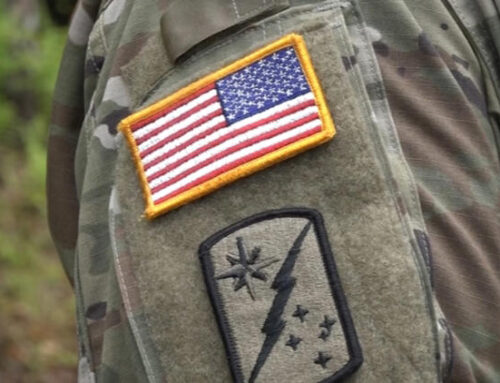How America Hunted German Submarines
Published: 5 September 2022

Convoy_082021
By Sebastien Roblin
via The National Interest web site
When Congress voted on April 6, 1917, to declare war on Imperial Germany, the task before the U.S. Navy was clear: it needed to transport and supply over a million men across the Atlantic despite the Imperial German Navy’s ferocious U-Boat campaign, which reached its peak that month, sinking over 874,000 tons of shipping.
Indeed, Germany’s decision to recommence unrestricted submarine warfare in February was one of the decisive factors driving the United States, and later Brazil, into finally joining “the war to end all wars.”
While World War I submarines could only remain submerged for brief periods, they were highly successful at picking off unescorted merchants ship in the Atlantic and Mediterranean. Neither active sonar nor radar yet existed with which to track submarines, though the British had begun using hydrophones to listen for the noise of a submarine’s diesel engine.
The most successful anti-submarine ships were agile “torpedo-boat destroyers,” which sank U-Boats using deck guns and even ramming. Starting in 1916, Royal Navy vessels carried depth charges designed to detonate underwater, rupturing a submarine’s hull. These proved effective if the ship captains could guess the sub’s position. Statistically, naval mines proved deadliest, accounting for one-third of U-Boat losses.
For years, the Royal Navy resisted instituting a convoy system to guard merchant ships, preferring not to divert warships from offensive missions and believing the decrease in throughput from adhering to a convoy schedule would prove worse than the losses inflicted by U-Boats.
But that April, U-Boats had sunk one-quarter of all merchant ships bound for the UK, leaving it with just six week’s grain supply. Threatened with economic collapse, the Royal Navy finally instituted the convoy system. But the Brits had a problem: they could divert only forty-three out of the seventy-five destroyers required to escort convoys.
Naval liaison Rear Admiral William Sims convinced the navy to dispatch thirty-five U.S. destroyers to bases at Queenstown (modern-day Cobh), Ireland to fill in the gap. These began escorting convoys on May 24, usually supported by navy cruisers. In 1918, an even larger escort flotilla began operating out of Brest, France.
The U.S. Navy itself began the war with only fifty-one destroyers. It immediately faced a classic military procurement problem: politicians and admirals wanted to build more expensive battleships and battlecruisers, construction of sixteen of which had been authorized by the Naval Act of 1916.
But the Royal Navy already had the German High Seas fleet effectively bottled up in port with its larger force. While five coal-burning and three oil-burning U.S. battleships did join the blockade in 1918, they never saw action. Common sense prevailed, and battleship construction was halted in favor of building 266 destroyers.
Read the entire article on The National Interest web site.
External Web Site Notice: This page contains information directly presented from an external source. The terms and conditions of this page may not be the same as those of this website. Click here to read the full disclaimer notice for external web sites. Thank you.



